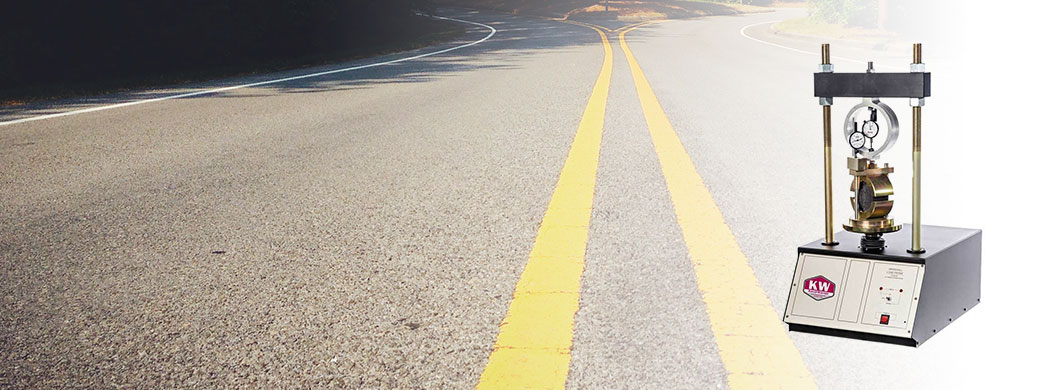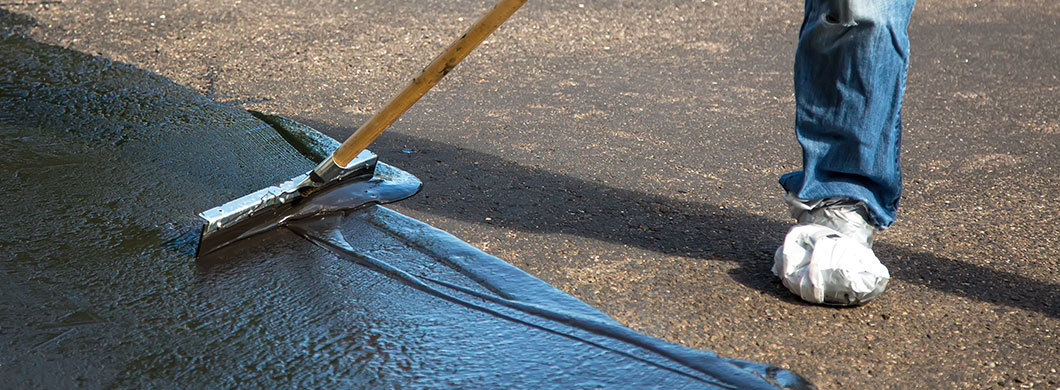Common Winter Pavement Issues & How to Solve Them
Jan 09, 2020
Winter is tough on roads. Between countless freeze/thaw cycles and the onslaught of chemical deicers, asphalt can quickly crack and crumble in a number of troublesome ways before spring rolls around again. Thankfully, there are several preventative measures and quick asphalt repair solutions that can temporarily fix many of the most common winter pavement problems.
Problem 1: Potholes
Potholes are one of the most common winter pavement issues, next to cracking. They are often caused when longitudinal and transverse surface cracks (also known as "alligator cracks" for their scaly appearance) give way under the repeated pressure of vehicle tires. This form of deterioration is almost always due to poor drainage around the asphalt sub-surface. In winter, the trapped moisture freezes and expands, which causes heaving and cracking that then collapses. Depending on where they appear in the roadway or parking lot, they can pose a major problem to drivers.
How to Repair Potholes
The challenge of properly repairing potholes in wintertime is that asphalt will not set properly in temperatures under 45-50°F. For this reason, many states prohibit paving in temperatures below this range without a special engineering permit — hence why late spring and summer are known as "construction season."
If pothole repair cannot wait until the temperature rises, cold mix asphalt is a good temporary solution. Cold mix asphalt doesn't require heat to be poured and set, but it will not last as long as hot or warm mix asphalt. Come construction season, it is best to use a hot mix to fully address the problem.
In order to prevent potholes altogether, it's crucial to implement proper drainage solutions in order to keep harmful moisture away from the pavement sub-base. During the construction process, it's also highly important that a thick layer of asphalt is laid and adequately compacted to prevent cracking that could turn into potholes later on.
Problem 2: Cracking
There are many different kinds of cracks that can form on asphalt during winter:
- Alligator cracks are a scaled pattern caused by the base or ground surface the pavement was laid on. It can also be the result of surface delamination.
- Block cracks form when a faulty binder was used in construction. They are connected rectangle-shaped breakages.
- Edge cracks occur at the edge of the pavement, usually due to poor support or drainage. They can also be caused by dense vegetation.
- Linear cracks run parallel to the pavement's centerline, and are some of the first kinds of cracks to appear in aging roads or parking lots.
- Transverse cracks run horizontal or diagonal to the pavement's centerline, and are usually caused by cracking deeper within the asphalt.
These common winter pavement issues are only exacerbated by freezing temperatures and chemical deicers.
How to Repair Asphalt Cracks
If the asphalt cracks are less than an inch wide, the best method to repair them is crack sealing. Sealant will keep water, deicers and other debris from entering the cracks and causing further deterioration. Using sealant can extend the life of a stretch of pavement by a few months or even a few years. When applying, clear the cracks of water, vegetation and other debris, then fill them with sealant until it is level with the pavement surface. Then, simply smooth over the excess for a sturdy seal.
The formation of cracks is inevitable in any paved area as time goes by, especially in regions with harsh winters. However, if the asphalt is properly mixed, laid and compacted with sufficient drainage underneath, you won't have to search for asphalt repair solutions so soon after paving.
Problem 3: Appearance
Asphalt looks beautiful just after it's laid, but even a single winter can leave it looking dull. Debris like fallen leaves and large piles of snow and ice can cause stains on your asphalt, as well as algae and bacteria growth. Salt and other chemical deicers cause surface pitting that can turn into cracks and potholes down the line. Even just a year of direct sunlight can cause the dark color to fade due to UV damage.
How to Maintain Asphalt Appearance
In order to keep asphalt looking nice and prevent the beginnings of larger winter pavement issues, it's crucial that sealcoating be applied as the final step during installation. Sealcoating prevents oxidation that can dry out asphalt and hinder its flexibility, making it easier for pits, cracks and potholes to form. It also gives asphalt its deep black appearance while protecting it from sunlight and, to some extent, chemicals and water.
General maintenance will also go a long way toward keeping asphalt beautiful and structurally sound for years to come. In autumn, be sure to keep fallen leaves and other debris off of pavement to prevent staining due to algae, mold or mildew buildup. Throughout the winter, keep the asphalt clear of snow and ice, which could seep in and cause cracks during a thaw/freeze cycle. Finally, if possible, use sand rather than salt or other chemical deicers; it won't melt ice and snow, but it will provide traction to vehicles while also causing less damage than traditional deicers.
Ensure Your Asphalt is Laid Right with Certified MTP
Putting down the optimal asphalt mixture during construction season is the best way to avoid winter pavement issues. To ensure you get the right mix every time, choose asphalt testing equipment from Certified Material Testing Products. Questions about our asphalt products? Contact us today for assistance.





